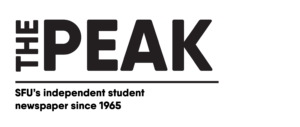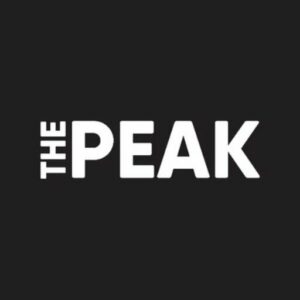By: Mason Mattu, Court Reporter
In an empty broken-down 143 Burquitlam Station bus at the upper bus loop, SFU FASS student Halley Cringer was having a typical first date with SFU Beedie student Jordan Belfort. Ms. Cringer reluctantly assisted Mr. Belfort with a colouring sheet — his BUS 201 midterm project — when Mr. Belfort asked Ms. Cringer the most exciting question known to humanity: “Do you want to play Cards Against Humanity?” Little did Ms. Cringer know what kind of sadistic turn Belfort’s game would take. The Pawn obtained a transcription of Ms. Cringer’s testimony to the BC Supreme Court during a cross-examination by Mr. Belfort’s defence lawyer, Mr. Fancépants.
Mr. Fancépants: Ms. Cringer — my client, Mr. Belfort, describes your Tinder profile as “the most disturbing thing any down-bad dating app user has ever seen.” Your account allegedly features photos of you posing with wax figures from a Madame Tussauds wax museum, claiming they are your ex-boyfriends . . . I’m not too sure how reliable your testimony will be, especially considering you found Cristiano Ronaldo’s wax figure — with his mouth so heinously open — attractive. Please describe what happened when my client pulled out a deck of Cards Against Humanity.
Ms. Cringer: OK (takes a puff of her e-cigarette). First of all, I’ve seen you on Tinder and swiped left. Just saying (takes another puff of her e-cigarette). Basically, Jordan pulled out the deck and smirked at me. I had no idea what was going on. He begged me to colour his colouring sheet for a midterm — a picture of the West Mall Centre of all places. He was so fucking pathetic that I gave in, I kind of felt bad for him. And I still thought he was kind of hot at that point.
Mr. Fancépants: Erm. Are you a fan of Cards Against Humanity?
Ms. Cringer: Yes, I am, jackwad. However, when I took the deck from his hands, I rolled my eyes. The box didn’t say Cards Against Humanity, it said Cards for Humanity.
Mr. Fancépants: Now, Ms. Cringer. I have no clue what you are trying to accuse my client of —
Ms. Cringer: Shut up you condescending, toxic, SUIT! (the gallery lets out a collective gasp as Ms. Cringer chuckles). I took the damn deck of cards from his hands and opened the box. I was even more shocked when I saw a disgruntled deck of regular playing cards inside with all the writing crossed out with Sharpie. That’s when I realized these were not any regular cards — they were homemade. What kind of cheap ass bozo is this?
Mr. Fancépants: OK, and?
Ms. Cringer: Every single black card had the same prompt on it — “Being a business student is better than _____.” So, uh, that was kind of awkward — Anyways, every single time I put a white card down on the musty bus chair, he’d tell me that it wasn’t funny enough. Like I even used that one card that said “Big Bird’s brown, crusty asshole.” I tried again and again with different cards, mind you all plagiarized from the original game, and he kept mocking me. Every few minutes, he’d go to the washroom in Blusson Hall to hit a maple-syrup flavoured joint and perform another devious lick challenge for his LinkedIn hustler network. After a few rounds, I couldn’t take it anymore.
Mr. Belfort approaches the judge with a black prompt card that reads, “Being a business student is better than _____.” The judge winked at Mr. Belfort and drew another black card from the box with the exact same prompt.
Mr. Belfort: You went to Beedie too, your honour?
Judge: You know it, broski. Gotta stay on that grind, you know?
Ms. Cringer: What the ACTUAL FUCK is going on? I’m never dating a Beedie bro again. Y’all are toxic as fuck. Court adjourned, y’all, I win.















































